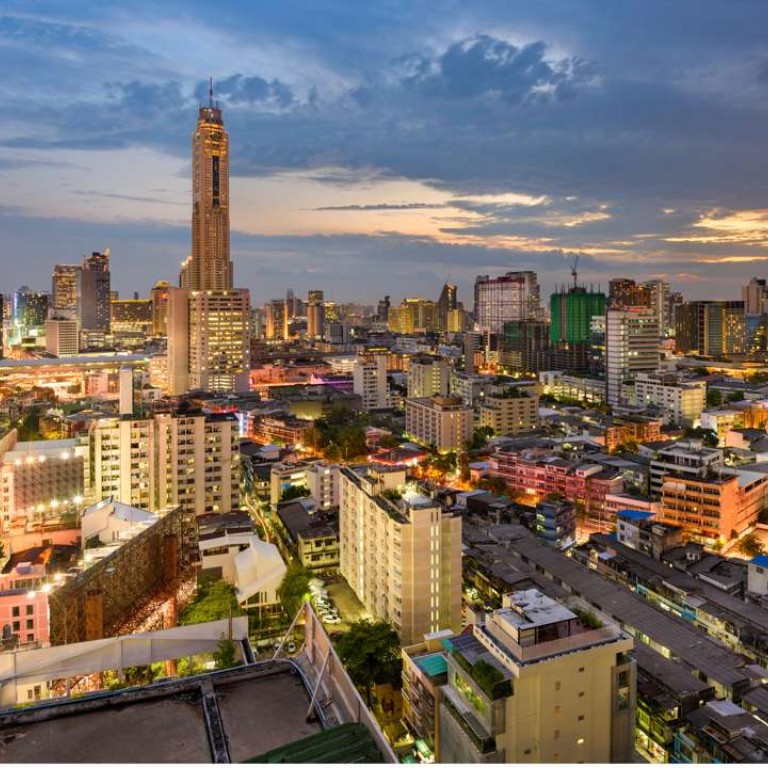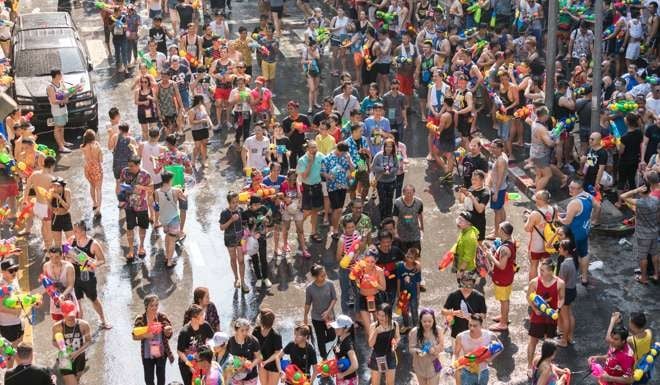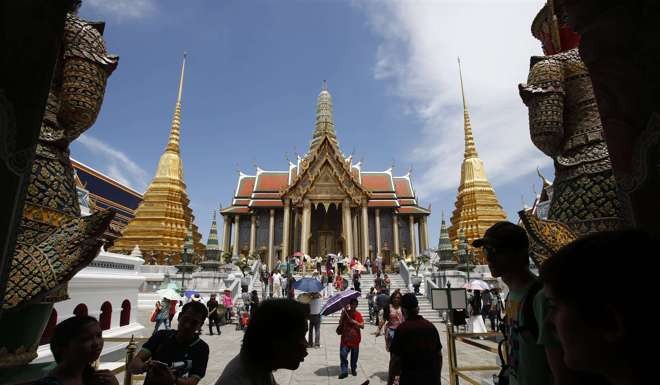
Bangkok - the good, bad and ugly sides to the Thai capital for visitors
The most visited city of 2016 offers amazing food, spas, temples and a favourable exchange rate between the Thai baht and other currencies. However, beware of tourist traps and the deadly traffic
THE GOOD
What do London, Paris, Dubai and New York have in common?
They all received fewer tourists than Bangkok last year. The Thai capital was the world’s most visited city of 2016 – and by some distance. Ask travellers why they chose Bangkok and you’ll receive responses as diverse as the city itself, from luxurious hotels to cheap backpacker accommodation, fine dining to spicy street food. There are countless spas and traditional massage schools; serene temples offer space for quiet contemplation and shoppers will find that the Thai baht is no match for the muscular Hong Kong dollar.
The Bangkok Mass Transit System, known as the BTS or Skytrain, ensures that getting around is a breeze and the Suvarnabhumi Airport Rail Link deposits passengers downtown in 30 minutes. Taxis are plentiful and inexpensive but make sure your driver turns on his meter and turns off his mobile phone. Hop on and off the public express ferries that shuttle along the Chao Phraya River or negotiate a price for a private long-tail boat ride. If you get a taste for life on the water, head to Damnoen Saduak floating market and watch locals sell fresh produce from their boats.
There are about 30 flights a day between Hong Kong and Bangkok, so if you’re considering a last-minute Lunar New Year getaway you may still be able to pick up a ticket. Timing the trip to coincide with a festival means you get to let your hair down with the locals. Bangkok’s sprawling Chinatown vies with San Francisco as the world’s largest and is home to more than a million ethnic Chinese. The Lunar New Year lion dances, paper offerings, firecrackers and red packets might be familiar – the balmy late-January temperatures less so.
Weather-wise, November to February is the best time to visit. So while Hong Kong is at its coldest, dampest and dreariest, Bangkok is enjoying sunshine, blue skies and comfortable humidity levels.

Bangkok is also a good place to have your teeth seen to. State-of-the-art dental clinics specialising in implants and cosmetic dentistry will soon have you smiling like a Thai – especially when you get the bill.

THE BAD
You’ll be glad of the peace and quiet temples provide; if only to get away from Bangkok’s relentless traffic. According to a Dutch satnav company, only Mexico City has worse congestion. Worse still, 478 people were killed and 4,128 injured in road accidents over the recent Christmas and New Year holiday period – the highest since records began. The number of fatalities over Songkran doesn’t make for good reading, either. Water, wheels and whisky are a deadly combination and despite the best efforts of the Thai government to promote sensible, sober celebrations, drink driving is a factor in about 40 per cent of Songkran accidents. Even clear-headed motorists find negotiating the streets a challenge as revellers soak them with water from buckets, plastic scoops and even high-pressure fire hoses that send motorcyclists sprawling. Tourists who manage to avoid being flattened by weaving tuk tuks could still end up in hospital if they swallow the filthy water.
Talking of which, the Chao Phraya draws crowds of visitors prepared to swap petrol fumes for a smelly, polluted waterway. Express boats filled with commuters and sightseers race along the milk chocolate-coloured river. Fourteen baht sounds like a bargain until the pushing and shoving begins and you find yourself hemmed in, Hong Kong tram-style. You’ll get close-up views of locals living in stilt homes but you’ll also see how and where they dispose of their waste. Sure, there’s the Grand Palace to marvel at, as well as the Khmer-style Wat Arun temple, but you can forget about discussing their flawless beauty with fellow travellers. They’ll never hear you above the incessant din of the engine.

Getting on and off the fast ferries requires skill and balance. Long-tail boats scream past, creating tsunami-like wakes, and river marshals on bobbing jetties bark at passengers to hurry up. It’s no easier for the captain, who has to steer around kids swimming amid floating vegetation, animal carcasses and even human remains. Early last year, police identified multiple body parts found in the Chao Phraya as belonging to a Spanish businessman who they believe had been kidnapped and robbed before being murdered.
If Bangkok’s riparian artery is not for you, there’s always the Skytrain. Remember, though, if your airline operates from Don Muang Airport, you’ll need a taxi for at least part of the journey, as the rail line extends only as far as Mo Chit station. Opt for a tuk tuk and you could end up at a gem emporium or any number of other souvenir outlets en route to the departure terminal. You could try explaining that you’re in a hurry but don’t expect the driver to understand. Levels of English competence in Bangkok, and Thailand in general, lag behind most of its neighbours. According to Education First Language Institute’s 2016 English Proficiency Index, Thailand ranks 15th out of 19 countries in Asia, with “very low” proficiency.

THE UGLY
Schedule a half-day tour to Damnoen Saduak floating market, by all means, but don’t expect an authentic experience. “Tourist trap”, “Rip off” and “Floating toilet” are recurring TripAdvisor gripes, or as one contributor put it: “… you have to pay 1,500 baht to sit in the boat whilst (traders) try to sell you overpriced junk”.

